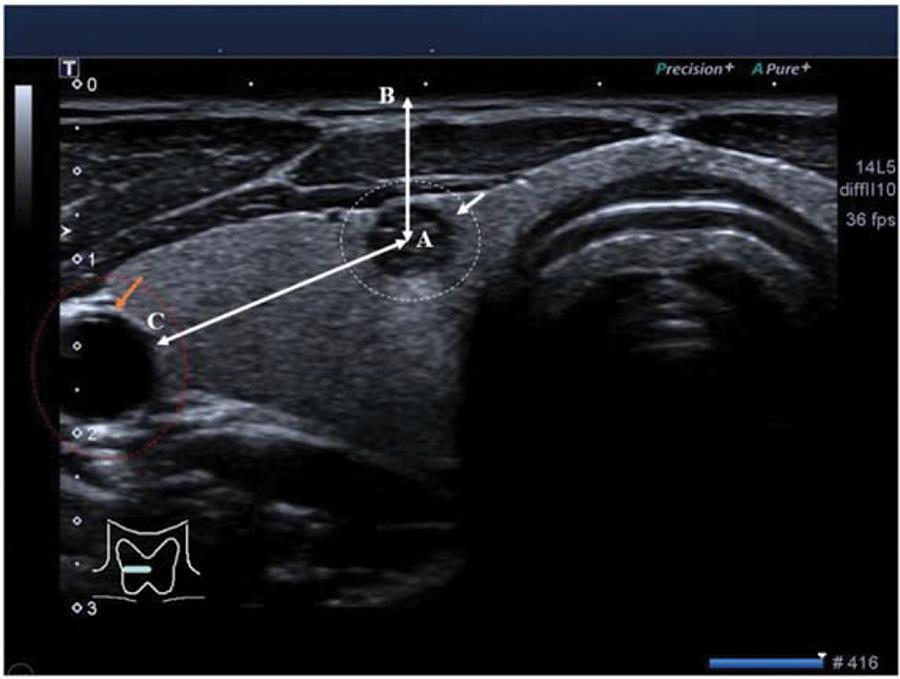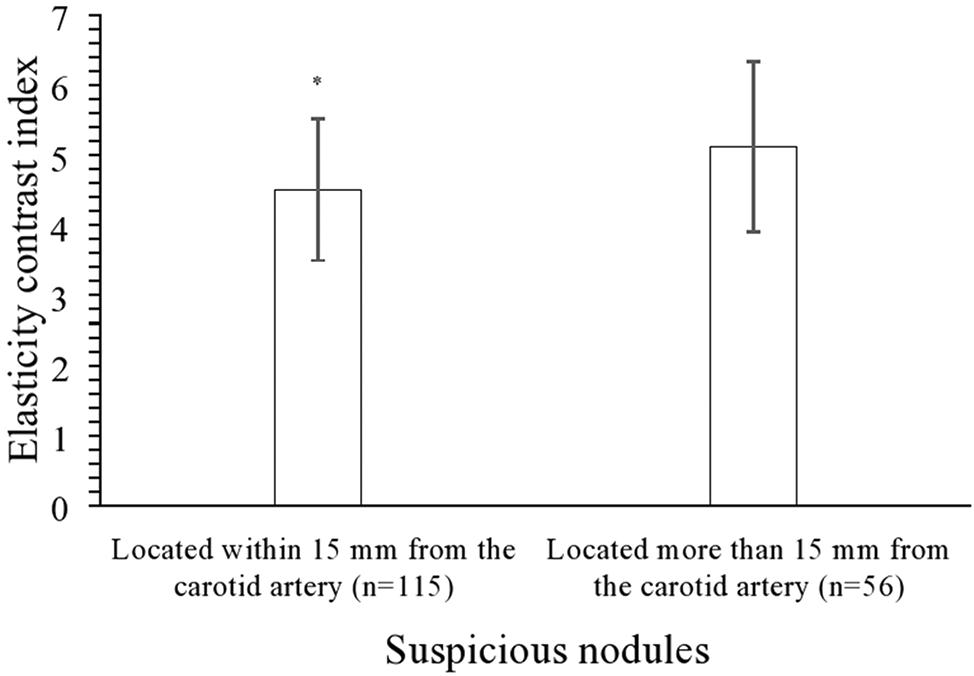OBJECTIVES:
Ultrasound-guided fine-needle aspiration biopsies are recommended for the detection of suspicious thyroid nodules. However, the best approach regarding suspicious ultrasound features for thyroid nodules is still unclear. This study aimed to evaluate the effect of location and size of thyroid nodules on the diagnostic performance of strain ultrasound elastography. In addition, this study evaluated whether ultrasound elastography predicts malignancy in thyroid nodules.
METHODS:
Data regarding the size, depth, and distance from the carotid artery of nodules, the elasticity contrast index, and the nature of nodules were analyzed.
RESULTS:
There was no significant difference in the depth (p=0.092) and the distance from the carotid artery (p=0.061) between benign and suspicious nodules. Suspicious nodules were smaller than benign nodules (p<0.0001, q=23.84) and had a higher elasticity contrast index (p<0.0001, q=21.05). The depth of nodules and the size of the nodule were not associated with the correct value of the elasticity contrast index (p>0.05 for both). The diagnostic performance of ultrasound elastography was not affected by the distance of the nodules from the carotid artery if they were located ≥15 mm from the carotid artery (p=0.5960). However, if the suspicious nodules were located <15 mm from the carotid artery, the diagnostic accuracy was hampered (p=0.006).
CONCLUSIONS:
The strain ultrasound elastography should be carefully evaluated when small thyroid nodules are located near the carotid artery.
Benign Nodules; Fine-Needle Aspiration Cytopathology; Grayscale Ultrasound; Suspicious Nodules; Ultrasound Elastography; Thyroid Nodules





